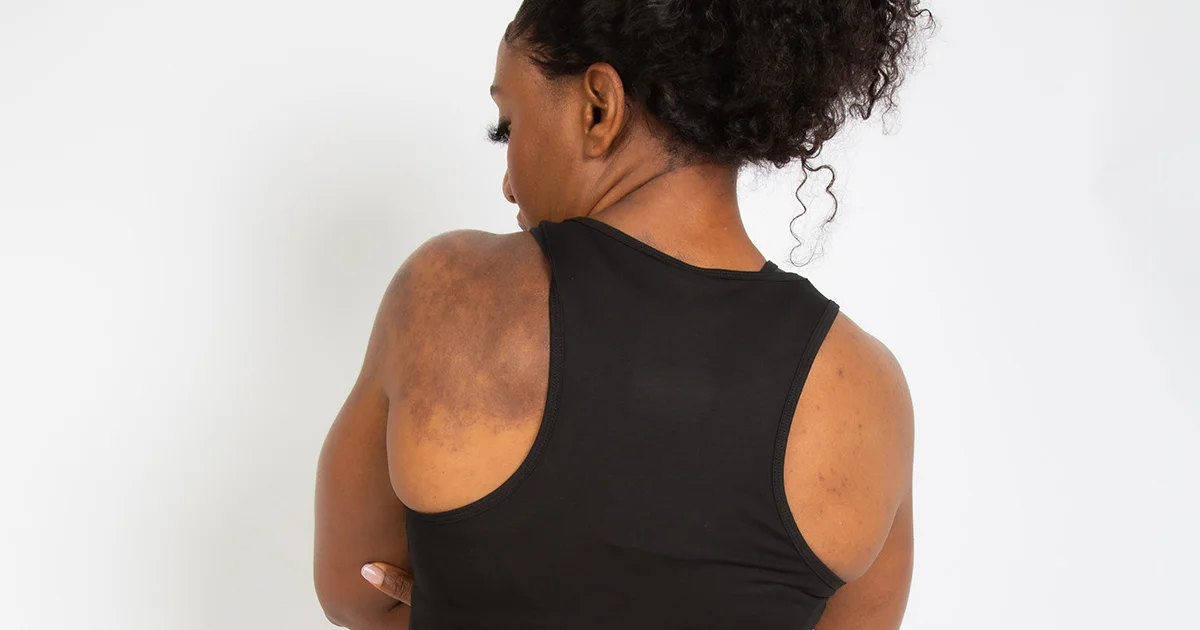Here's what we'll cover
Here's what we'll cover
It seems like people are always talking about how good exercise is for you. You’ve got one friend trying to convince you to be her new running buddy, another friend invites you to join him at his favorite yoga class all the time, and yet another friend won’t stop singing her praises about her weightlifting routine.
Are these exercise-junkie friends of yours onto something? Why is exercise so good for you anyway? Keep reading to learn 10 benefits of exercise and tips to help you get started.
Top 10 benefits of exercise
There are many benefits of exercise we could talk about, but we’ll just focus on the 10 most important ones. From cholesterol to mental health to better sex, the benefits are far-reaching.
1. Better cholesterol levels
Your cholesterol levels are important markers for your heart health. Low-density lipoproteins (LDL) are considered the “bad” type of cholesterol. If too much LDL cholesterol in the blood builds up, you have a higher risk of atherosclerosis, which is when plaques develop in the arteries. This creates a dangerous environment, making serious problems like heart attack or stroke more likely.
Another type of cholesterol, high-density lipoprotein (HDL), is called the “good” cholesterol. HDL cholesterol helps to clean up bad cholesterol. Healthy cholesterol levels support a lower risk of developing blocked blood vessels, heart disease, and stroke.
Exercise helps to control cholesterol levels. Research shows exercise helps lower LDL cholesterol and triglyceride levels, while increasing HDL levels (Muscella, 2020).
2. Improved mental health
Exercise helps promote multiple areas of mental health. Research shows that exercise helps manage mental health conditions like anxiety, depression, affective disorders, and other mental disorders (Zschucke, 2013).
Exercise also helps with managing stress levels and boosting your overall mood. Studies show that regular physical activity can increase positive mood and decrease tension, fatigue, anger, and confusion (Basso, 2017).
3. Better blood sugar control
Physical activity helps improve blood sugar control and lower your risk for developing diabetes, a condition characterized by high blood sugar levels.
Insulin resistance is one of the common causes of type 2 diabetes. Insulin is the hormone responsible for bringing sugar glucose into cells. If you have insulin resistance, glucose stays in your bloodstream for longer than it should.
Exercise increases how much glucose the muscles use, improving insulin sensitivity. Research shows changes to diet and exercise combine to reduce the risk of diabetes by 58% (Ruegsegger, 2018).
4. Better blood pressure control
High blood pressure increases the risk for conditions like heart disease, stroke, and kidney disease. There are multiple studies to support the benefits of exercise on blood pressure levels and cardiovascular disease. Aerobic exercise (like running, swimming, biking), in particular, helps to lower blood pressure and maintain healthy levels (Vina, 2012).
5. Stronger muscles and bones
Physical activity helps support healthy muscle mass and bone health.
Strength workouts increase the workload on your muscles, which causes your body to build and repair muscle tissue (Vina, 2012). Exercises that focus on balance and controlled movements may help lower the risk of falls and injuries in older adults.
Weight-bearing exercises, like weight lifting and jogging, help support your bone density and bone health. When you’re younger, exercise helps increase bone density to develop stronger bones. As you age, you want to continue exercises to help prevent bone loss and diseases like osteoporosis (Benedetti, 2018).
6. Protected brain health
Exercise helps promote healthy brain cells by increasing memory and thinking skills while decreasing age-related changes in cognitive function.
It’s believed exercise helps prevent declines in brain function by promoting new nerve cells and stimulating activity in the brain. Protecting the health of nerve cells may decrease the risk for neurodegenerative diseases like Parkinson’s disease and Alzheimer’s disease (Basso, 2017).
7. Better sleep quality
Exercise helps release endorphins and other hormones that promote more restorative sleep (Vina, 2012). A 2018 study found that regular exercise helped improve sleep quality in people with insomnia (Banno, 2018).
It’s commonly believed that exercising in the evening interferes with sleep, but if the evening is the only time you have available to exercise, don’t worry. A 2019 meta-analysis suggests evening workouts won’t interfere with your sleep, although they do suggest limiting intense exercise within one hour of bedtime (Stutz, 2019).
8. Improved sex drive
There is a growing number of studies that support exercise as an important factor for sexual health. It’s normal for there to be changes in sex drive throughout your life. Still, changes in sexual function can be concerning and difficult to discuss.
Research suggests regular exercise may increase sex drive, performance, and sexual pleasure (Jiannine, 2018).
A review of research shows that physical activity helps improve male sexual function and helps manage the symptoms of erectile dysfunction (ED) (Gerbild, 2018).
Another study examined the effects of exercise in postmenopausal women. The study found exercise improved sex drive, mind-body connection, and quality of sexual health in women after menopause (Carcelen-Fraile, 2020).
9. Better work performance
Regular exercise may help you do better at work, especially due to its ability to prevent work-related fatigue or burnout.
A 2017 study found that exercise helped reduce emotional exhaustion, overall tired feelings, and the need for time to recover related to work (de Vries, 2017). That means you may feel less worn out after work, have better energy levels, and spend fewer days recovering from work stress.
10. Healthy weight maintenance
A regular exercise routine helps lower the chances of weight gain, reduces obesity risk, promotes weight loss, and makes it easier to maintain a healthy weight.
Of course, exercise is just one factor of maintaining a healthy weight. Still, inactivity increases your risk for insulin resistance, consuming too many calories, and other medical conditions (Myers, 2019).
Some research shows that using cardiovascular workouts with strength training in a combined program may lead to more significant weight loss and improvements in cardiovascular risk factors (Schroeder, 2019).
What is considered regular exercise?
Regular exercise is an exercise routine you do consistently. It doesn’t have to be the same exact workout or even the same type of exercise. Aim for a mix of cardio, flexibility, and strength training throughout the week. Usually, regular exercise refers to exercise done at least once weekly.
The general recommendation for exercise is at least 30 minutes a day, five days a week, or 150 minutes of moderate-intensity exercise total each week (Vina, 2012). However, you can adjust to more frequent, shorter workouts or longer workouts less often if that works better for your daily routine.
Exercise could be strength training, which focuses on building muscle strength. You can do strength workouts with equipment or bodyweight exercises.
Cardio exercises or aerobic activity focus on increasing heart rate, breathing, and blood flow throughout the body. This category includes a wide range of exercises. A few examples include running, cycling, swimming, dancing, and boxing.
How to start exercising
Adopting a new exercise routine may feel intimidating. It’s challenging to form a new habit and break old ones. One of the best ways to set yourself up for success is to create an easy-to-follow plan.
Here are some tips to help you get starting with a workout routine:
Set small goals: When creating a new habit, you want to give yourself little wins along the way. Celebrate completing your first workout, staying consistent for your first week, or comfortably using a few more pounds of weight. Giving yourself little wins and rewards along the way can keep you motivated and on track.
Plan your workouts ahead of time: Whether you’re working out alone, with others, or doing a workout video, it’s helpful to plan in advance. Deciding what exercises or videos you’ll do ahead of time saves you time and helps you stick to your exercise goals.
Try out different types of exercise: You probably won’t enjoy every type of workout you do. Still, enjoying your workouts makes them easier to stick to long-term. Mixing up the types of workouts you try can increase the odds of landing on a few that you like, plus give you options to choose from if you ever feel like you’re in an exercise rut.
Sign up for group fitness classes: Working out with other people may help increase your energy and motivation to exercise by providing community support. Exercising with other people can help you feel more accountable and have more fun while working out.
Get your gym bag ready to go: Being prepared for your workouts helps reduce excuses that may get in the way of your goals. Keeping your clothes and equipment ready to go makes it easy when the time comes for your workout.
DISCLAIMER
If you have any medical questions or concerns, please talk to your healthcare provider. The articles on Health Guide are underpinned by peer-reviewed research and information drawn from medical societies and governmental agencies. However, they are not a substitute for professional medical advice, diagnosis, or treatment.
Banno, M., Harada, Y., Taniguchi, M., Tobita, R., Tsujimoto, H., Tsujimoto, Y., et al. (2018). Exercise can improve sleep quality: a systematic review and meta-analysis. PeerJ, 6, e5172. doi: 10.7717/peerj.5172. Retrieved from https://www.ncbi.nlm.nih.gov/pmc/articles/PMC6045928/
Basso, J. C. & Suzuki, W. A. (2017). The effects of acute exercise on mood, cognition, neurophysiology, and neurochemical pathways: a review. Brain Plasticity, 2 (2), 127–152. doi: 10.3233/BPL-160040. Retrieved from https://www.ncbi.nlm.nih.gov/pmc/articles/PMC5928534/
Benedetti, M. G., Furlini, G., Zati, A., & Letizia Mauro, G. (2018). The effectiveness of physical exercise on bone density in osteoporotic patients. BioMed Research International, 2018,
doi: 10.1155/2018/4840531. Retrieved from https://www.ncbi.nlm.nih.gov/pmc/articles/PMC6323511/
Carcelén-Fraile, M., Aibar-Almazán, A., Martínez-Amat, A., Cruz-Díaz, D., Díaz-Mohedo, E., Redecillas-Peiró, M. T., & Hita-Contreras, F. (2020). Effects of physical exercise on sexual function and quality of sexual life related to menopausal symptoms in peri- and postmenopausal women: a systematic review. International Journal Of Environmental Research And Public Health, 17 (8), 2680. doi: 10.3390/ijerph17082680. Retrieved from https://www.ncbi.nlm.nih.gov/pmc/articles/PMC7215442/
de Vries, J. D., van Hooff, M., Geurts, S., & Kompier, M. (2017). Exercise to reduce work-related fatigue among employees: a randomized controlled trial. Scandinavian Journal of Work, Environment & Health, 43 (4), 337–349. doi: 10.5271/sjweh.3634. Retrieved from https://pubmed.ncbi.nlm.nih.gov/28323305/
Gerbild, H., Larsen, C. M., Graugaard, C., & Areskoug Josefsson, K. (2018). Physical activity to improve erectile function: a systematic review of intervention studies. Sexual Medicine, 6 (2), 75–89. doi: 10.1016/j.esxm.2018.02.001. Retrieved from https://www.ncbi.nlm.nih.gov/pmc/articles/PMC5960035/
Jiannine, L. M. (2018). An investigation of the relationship between physical fitness, self-concept, and sexual functioning. Journal Of Education And Health Promotion, 7,
doi: 10.4103/jehp.jehp_157_17. Retrieved from https://www.ncbi.nlm.nih.gov/pmc/articles/PMC5963213/
Muscella, A., Stefàno, E., & Marsigliante, S. (2020). The effects of exercise training on lipid metabolism and coronary heart disease. American Journal Of Physiology Heart And Circulatory Physiology, 319 (1), H76–H88. doi: 10.1152/ajpheart.00708.2019. Retrieved from https://pubmed.ncbi.nlm.nih.gov/32442027/
Myers, J., Kokkinos, P., & Nyelin, E. (2019). Physical activity, cardiorespiratory fitness, and the metabolic syndrome. Nutrients, 11 (7), 1652. doi: 10.3390/nu11071652. Retrieved from https://www.ncbi.nlm.nih.gov/pmc/articles/PMC6683051/
Ruegsegger, G. N. & Booth, F. W. (2018). Health benefits of exercise. Cold Spring Harbor Perspectives In Medicine, 8 (7), a029694. doi: 10.1101/cshperspect.a029694. Retrieved from https://www.ncbi.nlm.nih.gov/pmc/articles/PMC6027933/
Schroeder, E. C., Franke, W. D., Sharp, R. L., & Lee, D. C. (2019). Comparative effectiveness of aerobic, resistance, and combined training on cardiovascular disease risk factors: a randomized controlled trial. PloS One, 14 (1), e0210292. doi: 10.1371/journal.pone.0210292. Retrieved from https://www.ncbi.nlm.nih.gov/pmc/articles/PMC6322789/
Stutz, J., Eiholzer, R., & Spengler, C. M. (2019). Effects of evening exercise on sleep in healthy participants: a systematic review and meta-analysis. Sports Medicine, 49 (2), 269–287. doi: 10.1007/s40279-018-1015-0. Retrieved from https://pubmed.ncbi.nlm.nih.gov/30374942/
Vina, J., Sanchis-Gomar, F., Martinez-Bello, V., & Gomez-Cabrera, M. C. (2012). Exercise acts as a drug; the pharmacological benefits of exercise. British Journal Of Pharmacology, 167 (1), 1–12. doi: 10.1111/j.1476-5381.2012.01970.x. Retrieved from https://www.ncbi.nlm.nih.gov/pmc/articles/PMC3448908/
Zschucke, E., Gaudlitz, K., & Ströhle, A. (2013). Exercise and physical activity in mental disorders: clinical and experimental evidence. Journal Of Preventive Medicine And Public Health, 46 Suppl 1 (Suppl 1), S12–S21. doi: 10.3961/jpmph.2013.46.S.S12. Retrieved from https://pubmed.ncbi.nlm.nih.gov/23412549/












